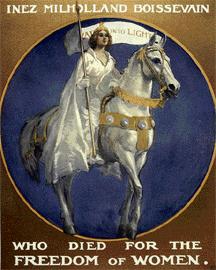 |
| Upton Sinclair (1878-1968) |
Sinclair earned money by writing for stories for newspapers and magazines. At 17, he did so well he had his own apartment, and shared his income with his parents.
Sinclair married three times. After his first marriage, to Meta Fuller in 1902, the money he earned was not enough to support his family. A well-off uncle financed his first novel which he self-published when he was 21. But his sense of unfairness at the disparity between his parents' great poverty and his uncle's wealth led him to become a member of the Socialist Party.
A Socialist journal commissioned him to write about immigrants working in the Chicago meatpacking district, and Macmillan gave him an advance for the book. Sinclair moved to the stockyards district, and for seven weeks took notes that led to his book, The Jungle. It was serialized in the journal, but Macmillan wouldn't print it unless Sinclair toned it down. Instead, Sinclair showed it to four other publishers who, alas, echoed Macmillan's sentiments. Sinclair steamed ahead with another self-publishing plan and started taking pre-print orders. His sales were good and Doubleday stepped in to publish the book if someone would verify Sinclair's story. Doubleday's lawyer went to Chicago and verified the unsanitary conditions, and the book was published in 1906, to huge praise.
However, Sinclair had intended to expose maltreatment of meatpacking workers, but readers latched on to the more selfish issue of unsanitary food preparation. President Teddy Roosevelt praised the book and the upshot was the Pure Food and Drugs Act. In the wake of the book's success, Sinclair went on to publish 90 more books.
Upton Sinclair met Inez Milholland at the Intercollegiate Socialist Society in 1910, as described in the book on Sinclair by Lauren Coodley. He fell passionately in love with Inez and remembered their conversation many years later. He was still married to his first wife Meta, but they were having trial separations. Inez said she could not be involved with another married man because one was enough.
Sinclair and his first wife were divorced in 1911. His letters to Inez Milholland (at the Schlesinger Library, Harvard University ) show that he was looking to Inez for intellectual rapport that he did not have with Meta - or with either of his two subsequent wives.
In 1913, Inez married Eugen Boissevain. Sinclair married his second wife, Mary Craig, and they were together a long time, until 1961. His third and last wife was Mary Elizabeth Hard Willis, with whom he was married from 1961 until 1967. He died the following year.
He also very nearly won the governorship of California after his publication of a time-travel-to-the-future booklet titled "I, Governor of California And How I Ended Poverty". His plan to end poverty met with support and he headed the California Democratic Party's ticket. Despite his known socialist leanings, his candidacy (in the depths of the Depression) was competitive... but in the end he lost to the Republican candidate in 1934. Not at a loss for words whatever the outcome, he published a follow-up booklet: "I, Candidate for Governor and How I Got Licked."

